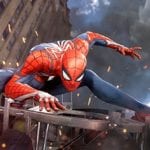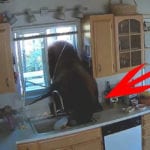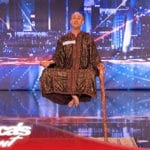 Mysteries
Mysteries  Mysteries
Mysteries  History
History 10 Surprising Stories About the Texas Rangers
 Humans
Humans 10 Philosophers Who Were Driven Mad by Their Own Theories
 Miscellaneous
Miscellaneous 10 Video-Game-Worthy Weapons and Armors from History
 Weird Stuff
Weird Stuff 10 Psychics Who Accurately Predicted Wartime Events
 The Arts
The Arts 10 Pieces of Art Inspired by a Broken Heart
 Health
Health 10 Science Fiction-Sounding New Medical Treatments
 History
History 10 Surprising Facts About the Father of Submarine Warfare
 Space
Space Ten Astonishing New Insights into Alien Worlds
 Weird Stuff
Weird Stuff 10 Bizarre Summer Solstice Rituals Still Practiced Today
 Mysteries
Mysteries Top 10 Haunting Facts About the Ghost Ship MV Alta
 History
History 10 Surprising Stories About the Texas Rangers
 Humans
Humans 10 Philosophers Who Were Driven Mad by Their Own Theories
Who's Behind Listverse?

Jamie Frater
Head Editor
Jamie founded Listverse due to an insatiable desire to share fascinating, obscure, and bizarre facts. He has been a guest speaker on numerous national radio and television stations and is a five time published author.
More About Us Miscellaneous
Miscellaneous 10 Video-Game-Worthy Weapons and Armors from History
 Weird Stuff
Weird Stuff 10 Psychics Who Accurately Predicted Wartime Events
 The Arts
The Arts 10 Pieces of Art Inspired by a Broken Heart
 Health
Health 10 Science Fiction-Sounding New Medical Treatments
 History
History 10 Surprising Facts About the Father of Submarine Warfare
 Space
Space Ten Astonishing New Insights into Alien Worlds
 Weird Stuff
Weird Stuff 10 Bizarre Summer Solstice Rituals Still Practiced Today
Top 10 Moments of Silence in Movies
Sound design is often underappreciated in movies, despite its importance. Sound design is divided into three categories: dialogue, sound effects, and music. Often all three mingle together at once, but there is almost always at least one of these categories being heard. Moments of silence are relatively rare, but they can be incredibly impactful.
This list rounds up the ten best uses of silence in films that otherwise use sound (so actual silent films are excluded). This goes beyond just having no dialogue and includes an absence of music too. For example, while the first ten minutes of Pixar’s Up (2009) feature no talking, the score fills that gap. This list includes examples of simulated silence, as well as rare instances of the audio track being completely silent.
Related: Top 10 Movies That Feel Like An Acid Trip
10 Contact (1997)
Contact begins with a shot of Earth as seen from space which then pulls back and zooms out. The camera whips past other planets and is accompanied by TV and radio transmissions that go further back in time the further away from Earth the camera travels. It begins as a babble of overlapping noise. However, it gradually becomes quieter until, eventually, out amid space, there are roughly 30 seconds of silence (which is a bold way to start a movie).
On the DVD audio commentary, director Robert Zemeckis talks about how it was supposed to be with “the camera flying toward the Earth; that’s how it was written, that’s how the book [by Carl Sagan] started, as if it were ‘the message’ coming at the Earth.” By doing the shot in reverse, though, the opening scene establishes humanity’s tiny place within the vastness of space. Producer Steve Starkey adds that the sequence “gives you a new perspective on planet Earth to look at it from this far out in the universe. You render yourself rather insignificant in relation to the whole.”[1]
9 The Departed (2006)
Martin Scorsese regularly plays with silence in his movies, believing that it is so important, but audiences “unfortunately expect sound from first frame to last frame, and I think they expect music, too.” For example, he includes a short but effective moment of silence in The Departed. Colin Sullivan (Matt Damon) is planted as a mole within the police by mob boss Frank Costello (Jack Nicholson); at the same time, the police assign undercover cop Billy Costigan (Leonardo DiCaprio) to infiltrate Costello’s crew.
An incredible moment of tension occurs between Sullivan and Costigan after Captain Queenan (Martin Sheen), one of the only two cops Costigan can trust, is murdered by the mob. Sullivan sits at Queenan’s desk and dials the last number the Captain called. Costigan’s phone vibrates, and he hesitantly answers. There are a few beats of silence as neither wants to speak first. The silence here focuses the audience’s attention entirely on the performances of Damon and DiCaprio. No music is needed to convey how either character feels.[2]
8 Alien (1979)
Ridley Scott’s Alien is a masterpiece of sci-fi horror, and that is partly down to the soundtrack by Jerry Goldsmith and the sound design by Derrick Leather, Jim Shields, and Bill Rowe. It is often the near lack of sound, with only faint natural noises coming to the forefront, which is so scary. The film’s editor, Terry Rawlings, explains how crucial sound is to building a terrifying atmosphere, stating that when working on the first cut of the film, “you’ve really got to use your imagination because there’s no sound.”
A good example is the scene where Brett (Harry Dean Stanton) searches for the crew’s cat, Jones, once the chestburster is loose. Rawlings explains that without sound design, “you sit there and look at him creeping around in the rain room silent, and it’s boring.” Regularly throughout this scene, the silence is punctuated by the quiet sounds of clinking chains and the rain. These just-audible everyday sounds (known as Foley sounds) would not usually be noticeable. However, they make the audience hyper-aware of danger.[3]
7 Whiplash (2014)
It is no wonder that sound is paramount in Damien Chazelle’s Whiplash, given that it is about a jazz drummer, Andrew Neiman (Miles Teller). Andrew is physically and verbally abused by his bandleader, Terence Fletcher (J. K. Simmons), in an attempt to push him to be the best. The final minutes comprise an almost dialogue-free psychological battle between the two while Andrew plays an unexpected solo.
During the middle of this performance, the sound is reduced to nothing, and in the silence, the film focuses on Andrew’s facial expressions. His drumming finally inspires admiration from his teacher but watching him play in silence forces the audience to consider the personal cost of his musical success. The sound of his drum solo then builds back up. Once it is finished, about 10 seconds of silence follow, as the student seeks approval and the teacher acknowledges perfection. They smile at each other, and the band starts up for just a few seconds before the film ends.[4]
6 The Birds (1963)
Alfred Hitchcock, known as the Master of Suspense, understood that sound design is one of the key factors in creating a feeling of fear. In The Birds, he insisted that there be no traditional soundtrack, instead letting the screeching of birds serve as the score. The loudness of the birds makes the moments of silence more ominous. They are not totally absent of sound, however. Hitchcock created an almost undetectable electronic hum which “is the equivalent of brooding silence” to “give us a feeling of a waiting mass, that if they were unduly disturbed, an attack would start again.”
One particularly effective use of silence is when Lydia (Jessica Tandy) visits her neighbor. The pervasive quietness as she searches his house indicates that something is wrong. In the bedroom, she finds a scene of destruction, and then her eyes land on the mutilated corpse of her neighbor with his eyes pecked out. The noiseless reveal makes it all the more horrifying.[5]
5 Interstellar (2014)
When Interstellar first hit cinemas, there were complaints about the sound mix, especially about dialogue being drowned out by loud noises. Some cinemas even put up signs stating that it was not a fault of their equipment but an intentional decision made by director Christopher Nolan. He defended his decision, saying that “when you mix a film in an unconventional way as this, you’re bound to catch some people off guard, but hopefully people can appreciate the experience for what it’s intended to be.”
Though Nolan’s sound choices can be debated, one undeniably fantastic use of sound occurs in the scene where Dr. Mann (Matt Damon) docks his ship imperfectly and overrides the airlock safety system. Hans Zimmer’s score methodically builds in the background as Mann justifies his dangerous actions as being in service of humanity. Just after saying “there is a moment,” he is cut off by the airlock blowing. After the initial sound of Mann being sucked out into space, the resulting explosion is shown in total silence, which somehow feels louder than any sound effect.[6]
4 Attack of the Clones (2002)
Say what you will about Attack of the Clones, but the seismic charges that Jango Fett uses against Obi-Wan in the asteroid field are amazing. Seismic charges are bombs that draw in sound from anything around them and then explode in a wave of blue light. Like the vast majority of the sounds from the Star Wars movies, Ben Burtt created the noise for the bombs.
Burtt came up with the idea to create an “audio black hole” to represent “an explosion so cosmic that the energy of the sound is unable to escape at the time of ignition, but is released a moment later.” This black hole is characterized by a moment of absolute silence in the audio track, just before the deep twang of the explosion. This small interval of total silence has the effect of accentuating the sound of the blast. Burtt initially wanted to include this audio effect in A New Hope (1977) but “never had a sequence which allowed the explosion to be featured in a way that I could exploit the idea of delayed sound in space.”[7]
3 Saving Private Ryan (1998)
Music reminds audiences that they are watching a movie, so director Steven Spielberg omitted music from Saving Private Ryan’s battle scenes. By having only the sounds of screams and gunfire, the sequences take on a horrifying reality. The loudness of war makes the moments of quiet stand out even more. Sound designer Gary Rydstrom describes the moment where the camera shifts between being above and below the sea during the Omaha beach scene. He says, “Above water, the battle is chaos, its cacophony. Underwater it goes completely away.”
The muffled sound of the ocean is taken a step further when Tom Hanks’s character, Captain John H. Miller, is shell shocked. Rydstrom explains that it was Spielberg’s idea for Miller to “take the battle in without normal sound. It was a wonderful device to get inside somebody’s head.” Rydstrom created the near silence of Miller’s shell shock by recording ocean sounds, playing them over a speaker, and then recording the sound with a microphone through a long tube.[8]
2 No Country for Old Men (2007)
Large sections of No Country for Old Men feature no music and little dialogue. Such minimal sound means that the sounds that are heard become all the more important. The movie’s sound editor, Skip Lievsay, explains that most suspense films rely on music. However, the Coen brothers wanted to “remove the safety net that lets the audience feel like they know what’s going to happen. I think it makes the movie much more suspenseful. You’re not guided by the score, and so you lose that comfort zone.”
Silence is used to the best effect in the scene where Llewelyn Moss (Josh Brolin) is hiding out in a hotel room awaiting his pursuer, Anton Chigurh (Javier Bardem). Moss waits in almost total silence with only small noises cutting through, biding the viewer to hold their breath. Ethan Coen says that “Josh’s character is straining to hear, and you want to be in his point of view, likewise straining to hear.” We can hear the phone ringing in the distance and the soft tread of footsteps before the explosive gunfire starts.[9]
1 A Quiet Place (2018)
There is very little spoken dialogue in John Krasinski’s A Quiet Place due to it being set in a world where mysterious creatures kill anything that makes a sound. Sound designers Erik Aadahl and Ethan Van der Ryn wanted the audience to feel what the characters were feeling. Aadahl explains that the quietness of the movie makes people “hold their breath and get quiet themselves, and become aware of the sounds they are making. In a way, making the audience really an active participant in the experience of the film.”
Sound design was particularly important for the portrayal of Regan, played by deaf actress Millicent Simmonds. The audience often hears what she hears through her cochlear implant, and to capture that sound, Aadahl and Van der Ryn used their experience of being inside an anechoic chamber, where it is so quiet that you can hear “your heart faintly pumping in the background, your nervous system sort of buzzing away.” For moments when her implant was turned off, they went to total silence. This attention to sound detail resulted in an incredibly tense film.[10]








